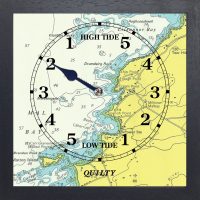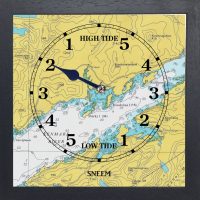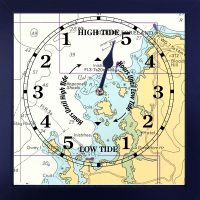Don’t Wait—November Special: FREE Shipping Sitewide & 20% OFF When You Buy 2+! Shop the Sale Today! Dismiss
Skip to contentGlengarriff, or “An Gleann Garbh” in Irish, meaning “the rough glen,” welcomes visitors with its rugged natural beauty and tranquil coastal charm. Nestled on the Beara Peninsula in County Cork, this enchanting village blends lush woodlands with serene harbours. Glengarriff offers breathtaking views of Garnish Island and Bantry Bay. Whether exploring forest trails or enjoying peaceful waters, visitors experience authentic Irish landscape magic year-round.
The Glengarriff map centers on the village bay, which opens westward into Bantry Bay. To the west, the map features Garnish Island, connected by boat, surrounded by calm sea waters and rocky shores. Southeast of the island, the map shows wooded coves and small beaches lining the peninsula’s rugged coastline.
Northward from the village, the map includes forested hills and mountain slopes, notably Knockanure and Hungry Hill. The inland area displays scattered farmsteads, freshwater lakes, and winding country roads threading through verdant terrain.
East of the map lies the picturesque village center with harbours, piers, and streets spreading out toward Dursey Sound. The southern reach shows more rugged coastal headlands, tidal flats, and bays offering scenic vistas and secluded spots.
Additional place-names on the map include Bere Island, Glanlough, Ballylickey, Ardnalea, and Inch.
A tide clock is a device that tells you if the tide is high or low, and how much time is left before it changes. It works by synchronising with the lunar cycle, which influences the tides. The tide clock has a single hand that rotates once every 12 hours and 25 minutes, which is the average time between two high tides or two low tides. The dial of the tide clock is divided into sections that indicate the state of the tide: high, low, rising, or falling. By looking at the position of the hand, you can tell what the tide is doing and how long it will take to change.
A tide clock can help you plan your activities around Glengariff by letting you know when the water is high enough or low enough for your preferred activity. For example, if you want to swim, you might want to avoid low tide, when the water is shallow and cold, and the mudflats are exposed. If you want to fish, you might want to avoid high tide, when the water is deep and fast, and the fish are dispersed. Going sailing, surfing, or kayaking? You might want to choose a time when the tide is rising or falling, which creates more favourable conditions for these sports. If you want to walk along the shore, you might want to choose a time when the tide is low, which reveals more of the beach and the wildlife.
A marine chart is a map of the sea and shoreline that shows water depths, hazards, and features you can use to understand the geography and infrastructure of a coastal location. It uses symbols and numbers to show how deep the water is at different places, where rocks, sandbanks, or wrecks are, and where channels are safer for boats. The chart marks landmarks on land—like lighthouses, piers, and headlands—so you can match what you see to the map.
The Glengariff Tide Clock contains full instructions on how to set and how to read a tide clock.
This is not a navigation device.

€65.00



“We received the tide clock this week and it is so fantastic, so beautiful! We love it. We just hit high tide on a full moon 5 min ago and I set it! Thank you thank you thank you and hope you are all doing well. I also was very excited to get a package from Ireland. That was half the fun!”
JF
“ I just received the tide clock that I ordered today, and I just wanted to say thank you! The service was so prompt, and the clock is amazing. It was great to find a gift for my husband who is very hard to buy for! He and my eldest daughter love to go fishing in the summer, so this will be very useful. Thanks again! .”
ML